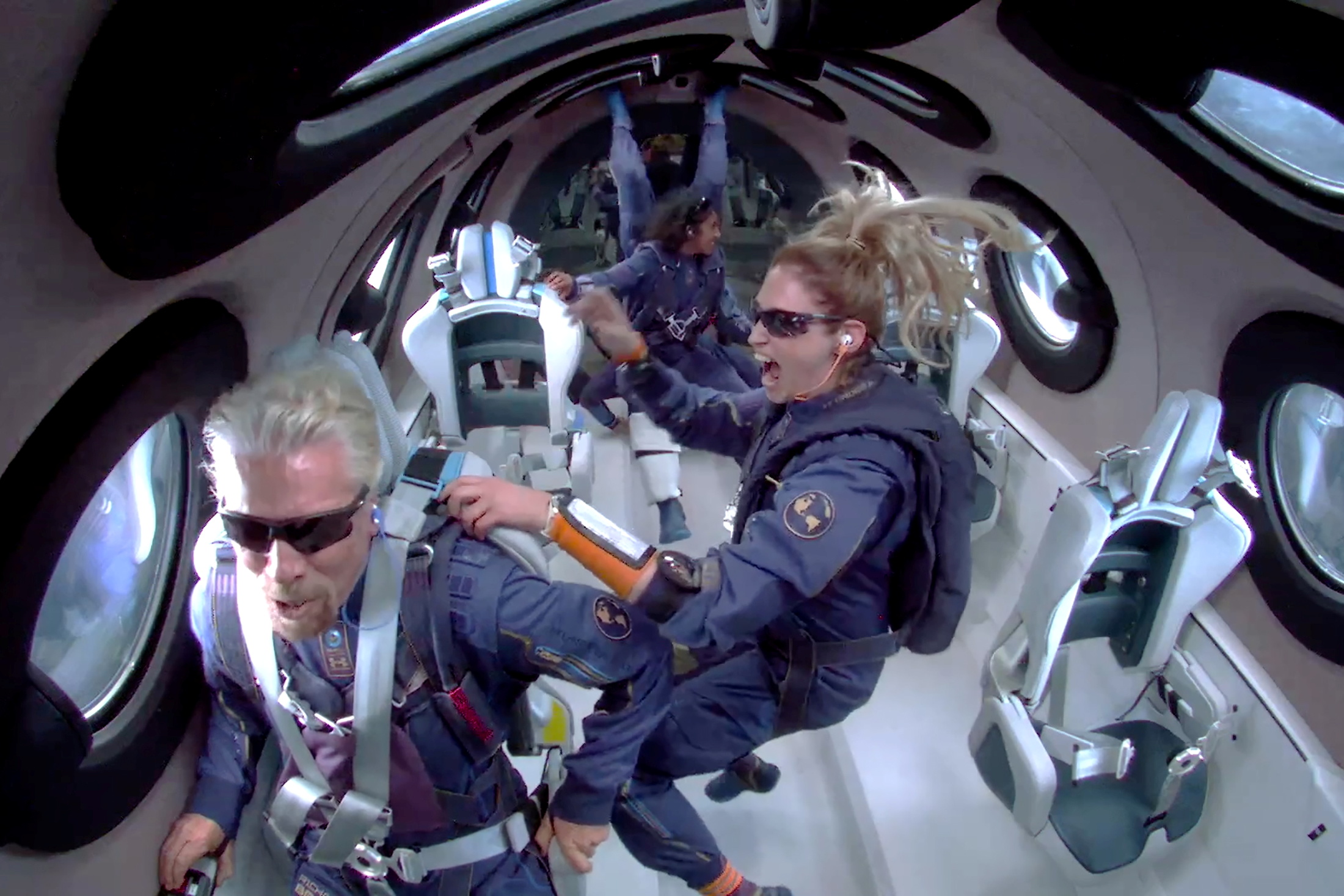
Virgin Galactic is a space tourism company that plans to provide paying clients suborbital flights into space in 2022. Richard Branson, a music entrepreneur, and British aerospace created the corporation.
Richard Branson’s Virgin Galactic achieved a major milestone on December 13, 2018, when its VSS Unity test spacecraft reached space – at least, according to one definition. The SpaceShipTwo vehicle attained an altitude of 51.4 miles (82.7 kilometers), which is marginally greater than what the United States Air Force deems the line between Earth’s atmosphere and space when awarding astronaut wings to its pilots. The most renowned Kármán line that starts at 62 miles (100 km) is, however, where space begins.
A joint venture between Scaled Composites and Virgin Galactic named The SpaceShip Company was announced by Branson and Rutan in July 2005. They produced SpaceShipTwo, a new generation of spacelines based on technology from SpaceShipOne. SpaceShipTwo spaceships have been designed to transport two pilots and six passengers. A new White Knight launching craft, named WhiteKnightTwo, was developed.
Before the crack of dawn, Richard Branson and Virgin Galactic employees (Sirisha Bandla, Beth Moses, Colin Bennett, as well as pilots Michael Masucci and Dave Mackay, boarded the SpaceShipTwo, a winged plane with a single rocket motor that the company has spent nearly two decades developing. The vehicle took to the skies at 8:30 a.m. MT, attached beneath its massive, twin-fuselage mothership, dubbed WhiteKnightTwo, and climbed to about 50,000 feet in the air.
The SpaceShipTwo segregated from its mothership shortly after 9:15 a.m. and fell for a brief moment before its engine screamed to life and the vehicle waltzed upward. The people on board felt up to three Gs of force from the burst of tremendous acceleration and saw the blue sky dissolve into the star-speckled darkness of outer space.
The ship was suspended in microgravity for several minutes at the top of the flight route, more than 50 miles above, enabling passengers to experience panoramic views of the Earth and space as SpaceShipTwo turned onto its belly. It then used its feathering technology, which coils the plane’s wings upward to resemble the shape of a badminton shuttlecock, to turn the spaceship right as it took a flight into Earth’s dense atmosphere and drifted down eventually to a runway landing.
Branson’s journey, which occurred just nine days before Amazon billionaire Jeff Bezos is scheduled to launch into suborbital space atop his own company’s spacecraft, is a watershed event in the commercial space business. For years, the emerging sector has worked to make suborbital space tourism (a comparatively easy straight-up-and-down flight, as compared to orbiting the Earth for extended periods of time) a feasible business, with the goal of letting thousands encounter the adrenaline rush and sweeping views of our home planet that such flights can provide.
On July 11, the space plane carrying Richard Branson takes off from Spaceport America near Truth or Consequences, New Mexico. Virgin Galactic intends to fly just one more test trip before beginning to fly paying clients. So far, almost 600 people have reserved tickets ranging in price from $200,000 to $250,000. The corporation plans to restore ticket sales soon but at a higher price.
Virgin Galactic’s reputation as the “world’s first commercial spaceline” is further boosted by Branson’s flight. That’s how the firm advertised itself as it signed up hundreds of eager consumers who had endured development delays — as well as a fatal disaster — for their opportunity to sail aboard SpaceShipTwo.
However, it is still not clear whether Virgin Galactic is the “first” commercially operational suborbital space company. The Blue Origin space company from Bezos seemed ready to bring its founders into space before Branson, but earlier in this month, Virgin Galactic announced that he will be leaving the company on the very next flight of tests.

Cr: Virgin Galactic
How Virgin Galactic Got Here
In May 2019, after years of delay, Virgin Galactic moved to her New Mexico facilities. Spaceport America was the brilliant building that was funded with over 200 million dollars in the majority of government money and Virgin Galactic was waiting for almost a decade to move in and be open for business. The company has renovated the facility with a lounge and other facilities that ticket holders can utilize before their short trip to the edge of the area.
A series of failures, including a catastrophic occurrence during the test flight of 2014, were endured in Virgin Galactic’s development program, which resulted in a co-pilot killed and the pilot injured seriously after the premature deployment of the spacecraft feathering system. Since then, the corporation has divided its production partner and says it has been working with additional automatic guarantees for SpaceShipTwo.
In advance of Sunday’s flight of tests, Branson said he was eager to join pilots and test engineers already on SpaceShipTwo as he felt that this was a vital vote of assurance.
Reference:
- https://www.virgingalactic.com/articles/virgin-galactic-announces-first-fully-crewed-spaceflight/
- https://www.space.com/18993-virgin-galactic.html
- https://www.google.com/url?sa=t&source=web&rct=j&url=https://amp.cnn.com/cnn/2021/07/11/tech/richard-branson-virgin-galactic-space-flight-scn/index.html&ved=2ahUKEwjg7erQoN_xAhWWFMAKHapbDxgQ0PADegQIDhAB&usg=AOvVaw2Ull3JoaySHMvFYwPLtnZY&cf=1














